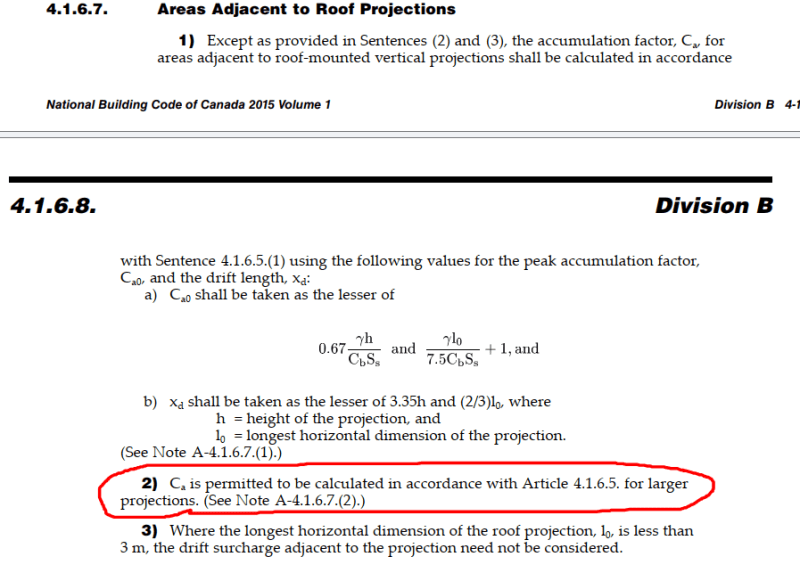Good Morning,
I am determining the snow drift load on a low roof, which is adjacent to a high roof.
I know that the leeward case is covered by snow load case I for lower level roofs (4.1.6.5), and the windward case is covered by Case II.
Out of interest, I wanted to see how the load would compare if I treated the high roof as a projection (cl. 4.1.6.7). The snow load in this case would be significantly higher.
I just want to confirm that there is no need to check an upper / lower roof case as though the upper roof is a projection?
Thanks very much for your input!
I am determining the snow drift load on a low roof, which is adjacent to a high roof.
I know that the leeward case is covered by snow load case I for lower level roofs (4.1.6.5), and the windward case is covered by Case II.
Out of interest, I wanted to see how the load would compare if I treated the high roof as a projection (cl. 4.1.6.7). The snow load in this case would be significantly higher.
I just want to confirm that there is no need to check an upper / lower roof case as though the upper roof is a projection?
Thanks very much for your input!

